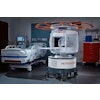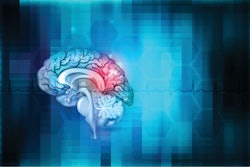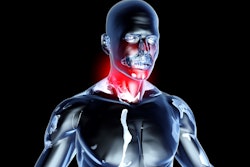MRI is the most cost-effective imaging modality for evaluating patients presenting to the emergency department with dizziness when downstream costs are considered, suggests research published November 8 in the American Journal of Radiology.
The results could improve patient care by catching underlying strokes, wrote a team led by Long Tu, MD, PhD, of Yale School of Medicine in New Haven, CT.
"Dizziness is the presentation of stroke that is most closely tied to a missed diagnosis," they wrote.
About 4% of emergency department visits in the U.S. are prompted by patient dizziness, and although less than 5% of these patients have experienced an underlying stroke, it's imperative to rule it out. Non-contrast head CT and head and neck CT angiography (CTA) are common exams used to diagnose stroke, but both have low sensitivity (23% and 42%, respectively). MRI has higher sensitivity (80%) -- and specialized MRI protocols such as high-resolution, multiplanar DWI acquisitions appear to have an even higher sensitivity rate, at 95% -- yet the modality isn't used as often compared to CT and CTA due to increased cost, limited availability, and potentially longer ED stays, the team explained.
But does MRI's benefits outweigh its extra cost? Tu's team investigated the cost-effectiveness of four neuroimaging approaches for evaluating patients presenting in the ED with dizziness: non-contrast CT head imaging; head and neck CT angiography; conventional brain MRI; and specialized MRI (including multiplanar high-resolution DWI). The group compared long-term costs and outcomes related to stroke detection and secondary prevention, calculating cost-effectiveness by lifetime expenditures in 2022 U.S. dollars for each quality-adjusted life year (QALY).
Tu and colleagues found the following:
- Specialized MRI resulted in the highest QALYs and was the most cost-effective strategy with $13,477 greater cost and 0.48 greater QALYs compared with noncontrast head CT.
- Conventional MRI had the next-highest health benefit, with an incremental cost of $6,756 and 0.25 QALYs; CTA had an incremental cost of $3,952 for 0.13 QALYs.
- Conventional MRI was more cost-effective than CTA, with incremental cost-effectiveness remaining less than $30,000 per QALY.
- Specialized MRI was more cost-effective than conventional MRI, which in turn was more cost-effective than CTA.
- Noncontrast CT alone had the lowest benefit among imaging choices.
Although MRI's incremental cost is higher than CT or CTA, its specificity and greater QALYs could reduce downstream costs, the team explained.
"[Although] we did not explicitly model the cost-effectiveness of multiple concurrent imaging examinations (e.g., CTA followed by MRI), the sensitivity analyses suggest that if the cost of any imaging strategy is less than 10 MRI examinations and sensitivity is at least as good as one MRI, then such an approach would likely be more cost-effective than CT or CTA alone," it wrote.
The complete study can be found here.


.fFmgij6Hin.png?auto=compress%2Cformat&fit=crop&h=100&q=70&w=100)





.fFmgij6Hin.png?auto=compress%2Cformat&fit=crop&h=167&q=70&w=250)











